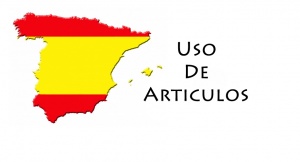Language/Spanish/Grammar/Orientación-sobre-el-uso-de-Articulos
Hello!
If you learn Spanish the grammar is quite simple.
Conjugation
Usually, we don't use the pronouns before the verbal conjugation.
Examples:
- vamos a casa (We're going home)
- vamos a jugar (we are going to play).
Articles
I have discovered that for all people who want to learn Spanish, the most difficult is the use of the articles and how to locate them correctly.
Let's look at the following:
LA
"La" is used for feminine words which usually end in:
- -a (perla, lógica, perra, ventana, puerta, amiga, pera)
- -er (mujer)
- -ra (primera, campera, tetera)
EL
"El" is Is used for masculine words that usually end in:
- -e (Nene, ambiente, mueble)
- -or (interior, superior)
- -io (lío)
- -o (sujeto, individuo, amigo, novio, marido)
- the four points of the compass (Norte, sur, este, oeste)
We never used an article before a verb. Most of the time we use one verb plus another verb. (quiero ir/ quiero tener/ quiero ver) (puedo ir/ puedo hablarte/ puedo querer).
Exceptions
However, there are some exceptions.
- Some words keep their form regardless of the gender to which they refer. Examples are:
- el estudiante
- la estudiante
- el violinista
- la violinista
- Some words are written with any of the two articles.
- el azúcar
- la azúcar
- Words like 'problema' end in '-a' but take the masculine article because they are masculine words.
- el problema
- el idioma
- In some dialects, there are words like 'tribo' or 'tribu' which have masculine endings but are feminine and therefore take the feminine article.
- la tribu
However recently the word 'tribo' in some dialects has been converted to a masculine word.
- el tribo
I hope this contribution will serve as a simple guide.
Thank you, Hugo Dante.


